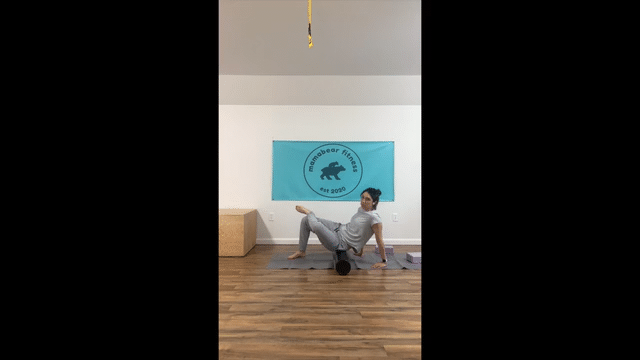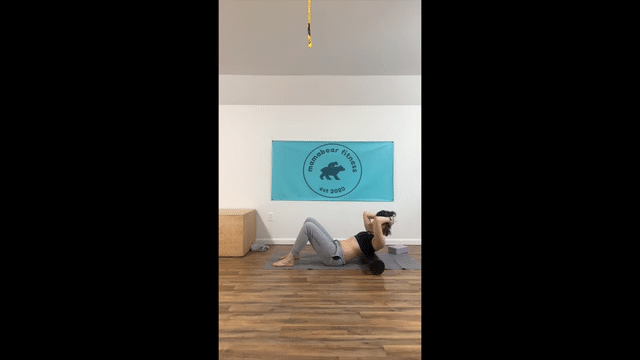Foam Rolling 101
Tight muscles? Feel like you need to stretch all the time? Foam rolling may be the missing piece of your puzzle!
What is foam rolling? Foam rolling is a form of myofascial release, a technique used on skeletal muscles to decrease tightness and improve blood flow. It applies pressure to the fascia on your muscles using body weight and a foam cylinder. Foam rolling helps promote muscle recovery and improve mobility. And better mobility means improved posture, core strength, and breathing!
Foam rolling is an awesome way to start your warm-up routine. Decreasing muscle tightness before a workout can help us better access specific muscle groups that might have previously been restricted.
Some general guidelines for foam rolling are:
Apply as much pressure as you feel you can tolerate WITHOUT tensing up.
Roll on an area for approximately 10-30 seconds.
Avoid rolling directly on joints and bones.
Avoid foam rolling if you are taking medications that could cause excessive bruising, such as blood thinners. (If you are taking any medications and are unsure, just ask your medical providers!)
If something is injured and you are unsure if there could be a tear or inflammation, do not roll the area.
This can be demanding on your core. If you notice any doming in your abs, avoid that position until you can manage it without seeing the doming. (What is "doming?" Check out my blog post on diastasis recti!)
Don’t hold your breath!
You can foam roll so many muscles! Below I outline some of my favorite areas to work on... but keep in mind, the possibilities are endless!
Piriformis
Sit in a figure-4 position on the foam roller. Turn your hips slightly towards the side of the crossed leg. Roll on your back pocket area (not right on your tailbone).
Hamstrings
Place the foam roller just below your glute. Roll from the top all the way to the back of your knee.
Calves
Roll on the back of your calf muscles. I like to turn my ankles in and out to get the different parts of my calf.
TFL (Tensor Fasciae Latae)
This pesky hip flexor muscle is often very tight! Lower yourself face down onto your foam roller and come slightly on the outside of your thigh. We can do this one leg at a time. You’ll want to roll on the front pocket area of your thigh. (This is not directly in the middle of your quads, but also not on the IT band. It is somewhere in the middle. This takes some maneuvering of your body!
Mid-Back (Thoracic Spine)
I LOVE this for improving mid-back mobility. Start by placing the foam roller on your back, just below the bra line area. Keep your knees bent and feet flat. Support your head and neck by lacing your fingers together and placing them behind your head. Inhale and slowly arch back over the foam roller and stop before your ribs start to flare outward. Exhale as you come back up. Perform this moving in small increments up your spine toward the top of your shoulder blades. Don’t forget to breathe!
Interested in learning more about improving posture, breathing, and core strength? Check out my Core Essentials at-home program and try the first week for FREE! Click the button below to learn more.
Resources:
“Foam Roller Exercises.” Core Exercise Solutions, 26 July 2019, https://www.coreexercisesolutions.com/how-to-use-a-foam-roller/.






